Elevate and extend your excess harvests of basil, thyme, rosemary, dill and other herbs to use in dishes—and cocktails—all year long.
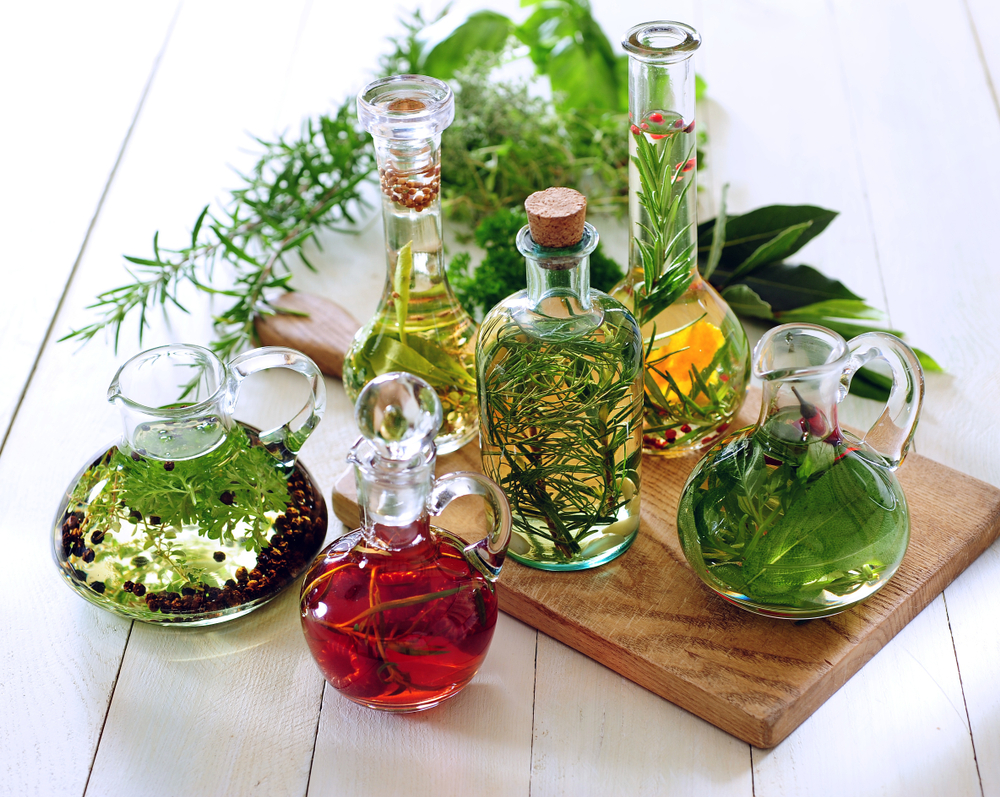
‘Tis the season for bountiful harvests. Those who cultivated a garden this spring and summer are likely reaping the benefits of their labor. While it’s a time that offers up equal amounts of excitement and gratification, the continuous sprouting of fresh produce has a tendency to sneak up on the best of us. As a result, it’s often that growers have more food than they know what to do with.
To provide some guidance on enjoying home-grown goods into the months and weeks ahead, Modern Farmer has provided guides on topics such as canning, dehydrating and fermenting your fruits and vegetables. And now, to build on tradition, we’re venturing into the territory of various herb preservation methods. From oils to salts and vinegars, you can enjoy your home-grown herbs all year long.
In advance of exploring the following options, we suggest you take a look at this cheat sheet from Penn State University on herb flavor profiles. This will be a helpful tool if you’re feeling adventurous and want to experiment with pairing different plants together.
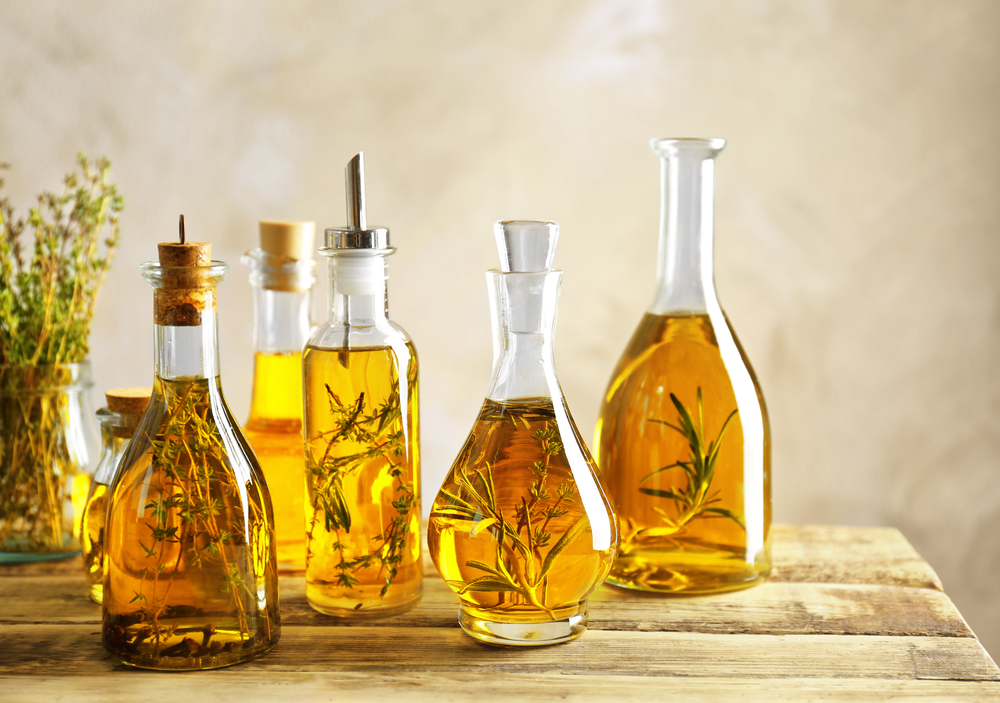
Photo by Africa Studio, Shutterstock.
Herb-Infused Oil
Want to add a kick of flavor to your sautéed vegetables, salad dressing or pizza? Herb-infused oil is one way to go.
As a general rule, the more herbs you use, the stronger the flavor of the oil will be. We recommend filling the jar about halfway with plants of your choice. While olive oil seems like the obvious choice as your base, avocado or grapeseed oils are suitable as well. Before adding herbs to the oil, wash them and ensure they’re dry. Any moisture creates the possibility of bacteria brewing.
You’re also going to want to place your herbs in a sterilized container and cover them with the appropriate amount of room-temperature oil. During this process, make sure you’ve fully covered your herbs with more than an inch of oil. Stir to release any air bubbles and put a lid on the jar or bottle. After two to three weeks, your infused oil will be complete and you can remove the herbs from the oil.
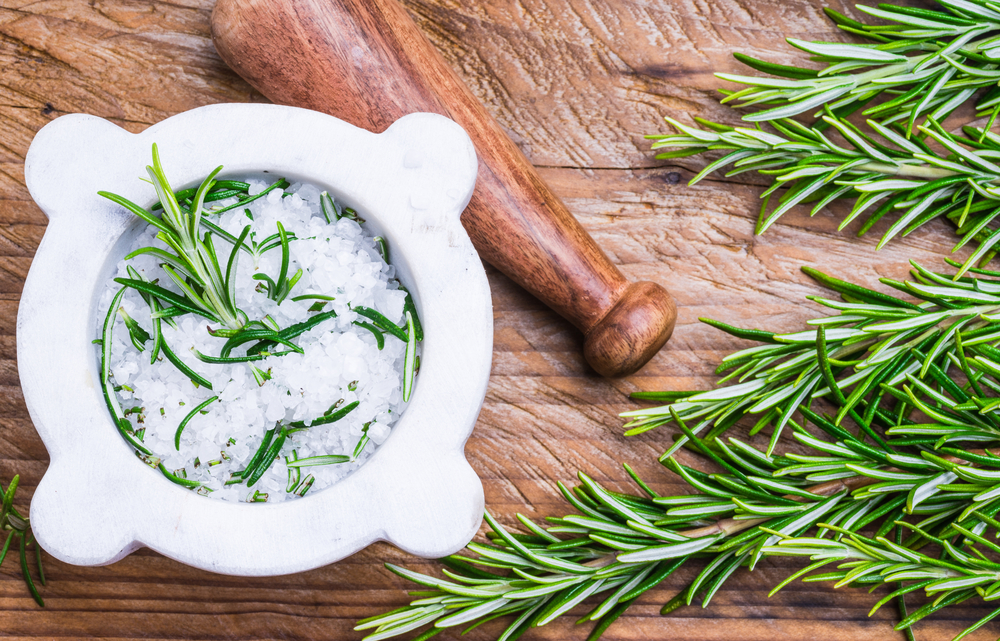
Photo by leonori, Shutterstock.
Herb-Salt Fusions
This is an option that is often forgotten about. Infusing your salt with herbs can be an easy way to elevate your meals while simultaneously preserving large amounts of fresh basil, thyme, rosemary, sage and so forth.
Sea salt or kosher salt are first-rate options, but canning and pickling salt will work, too. Before you add your herbs, wash them, dry them and remove any discolored leaves as well as thick stems. For every one cup of salt, use about six cups of loosely packed fresh herbs.
Next, you’re going to want to coarsely chop your herbs before you throw them into your salt of choice. You can also use a mortar and pestle; if you do, make sure you don’t crush the herbs into a paste.
When you mix your herbs with your salt, do so in layers until the container is full and then put it in the refrigerator. Don’t worry if you still have herbs left over at this point. When you check on your salt the next day, the herbs will likely have lost some of their volume. You can keep adding fresh herbs until the container is full before putting it back into the refrigerator.
It will take about one to two weeks for the flavors to meld, but your herb-infused salts should last about six months.
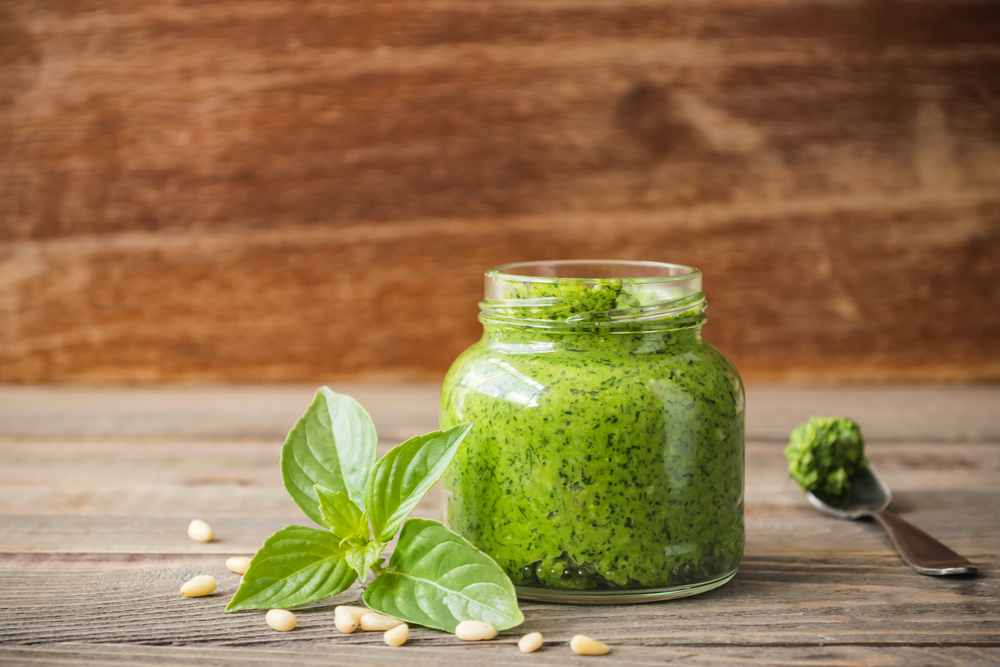
Photo by Natali Ximich, Shutterstock.
Herb Paste
Herb pastes make for a great marinade on meats or vegetables, can be mixed into hummus or spreads and provide an easy way to season soups and sauces. To make an herb paste, separate the leaves of your herbs from the stems and place them into a food processor. Pulse until they are chopped finely. If you don’t have a food processor, a knife and cutting board work just as well.
If you’re using a food processor, slowly add olive oil until the texture gets to a paste-like consistency—just as you might while making fresh pesto. If you’ve opted for a knife and cutting board, throw your finely chopped herbs into a bowl and mix in the olive oil as needed.
Your paste should last around two weeks if you choose to keep it in the refrigerator. You can also freeze your paste on a pan lined with parchment paper, in an ice cube tray or in airtight containers or Ziploc bags to preserve it for longer.
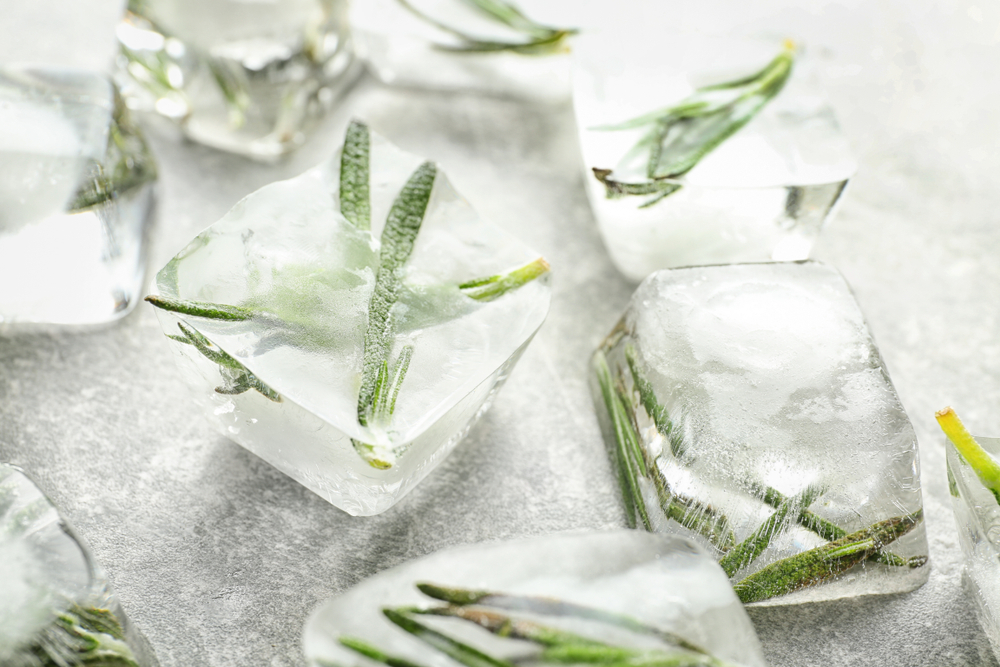
Photo by Pixel-Shot, Shutterstock.
Herb Ice Cubes
Preserve your fresh mint and basil for the next time you want to add a garden fresh option for cocktail hour. Freezing your herbs in ice cubes can also provide an easily rationed portion for recipes months into the future. It’s important to note that even if they are limp when defrosted, the herbs’ flavor won’t be compromised.
First, rinse your herbs and pat them dry. Then, depending on whether you plan to use the herbs in a drink or in a recipe, decide how finely you want to chop them. For dressing up a cocktail, we suggest using larger clippings, but if your intent is to eventually use them for flavor in a recipe, coarsely chopped is best.
Once the herbs are clipped or chopped, add them to an ice tray or mold. Pour enough water on your herbs so that each cube is filled about one third to the top. Put them in the freezer and check on them after about an hour has passed. You will see the herbs have risen to the top of the surface, so you can fill the rest of the ice cube mold with water and throw it back into the freezer for the remaining mixture to freeze.
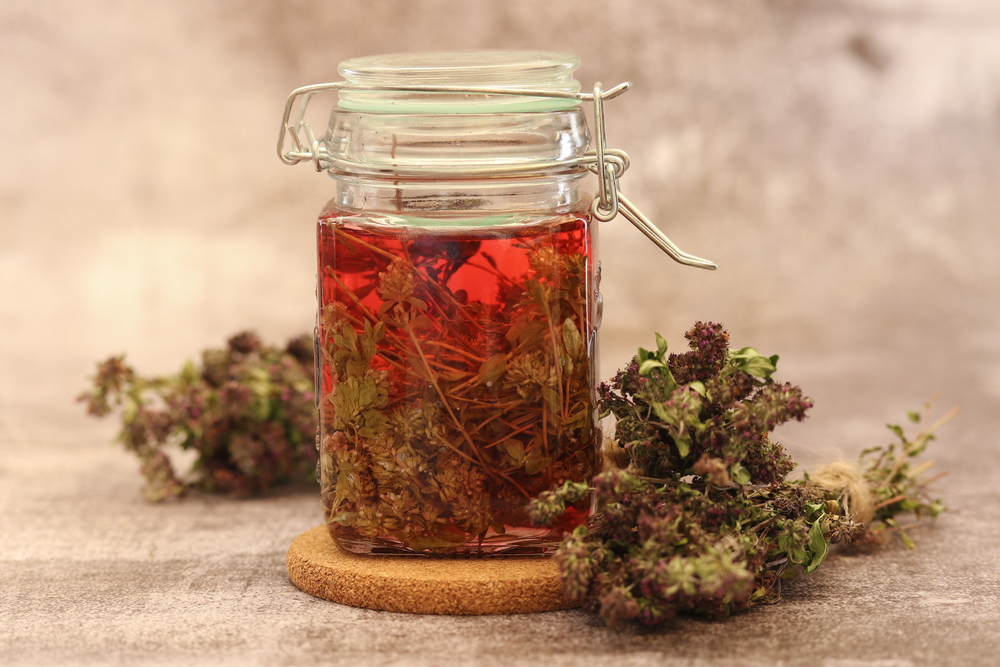
Photo by marinya, Shutterstock.
Herb-Infused Vinegar Blends
You have a variety of choices if you decide to preserve your herbs in vinegar. Red wine vinegar, white wine vinegar, apple cider vinegar or rice vinegar are all great options. Stay away from balsamic vinegar, as its flavor will be too overpowering. If you’re looking for something less acidic and more complimentary to your herbs, we suggest you start with rice vinegar or white wine vinegar.
Unlike many of the other preservation methods, you don’t need to chop up your herbs. Feel free to use them on their stalks or stems, but make sure you have sanitized your herbs and your canning jars before you start the process. We recommend a one-to-two ratio of herbs to vinegar.
Prior to mixing, you’re going to want to heat your vinegar to a temperature that is just below boiling point (190°F-195°F). You can then pour your vinegar over your herbs and any other ingredients, leaving about a quarter of an inch from the top of the jar.
Store your herb-infused vinegar at room temperature for about three to four weeks to allow the flavors to develop. You can remove most of the herbs at this point, but we think leaving a few springs in the jar makes for better aesthetics. If you choose, you can strain out the herbs and pour your vinegar into clean bottles.
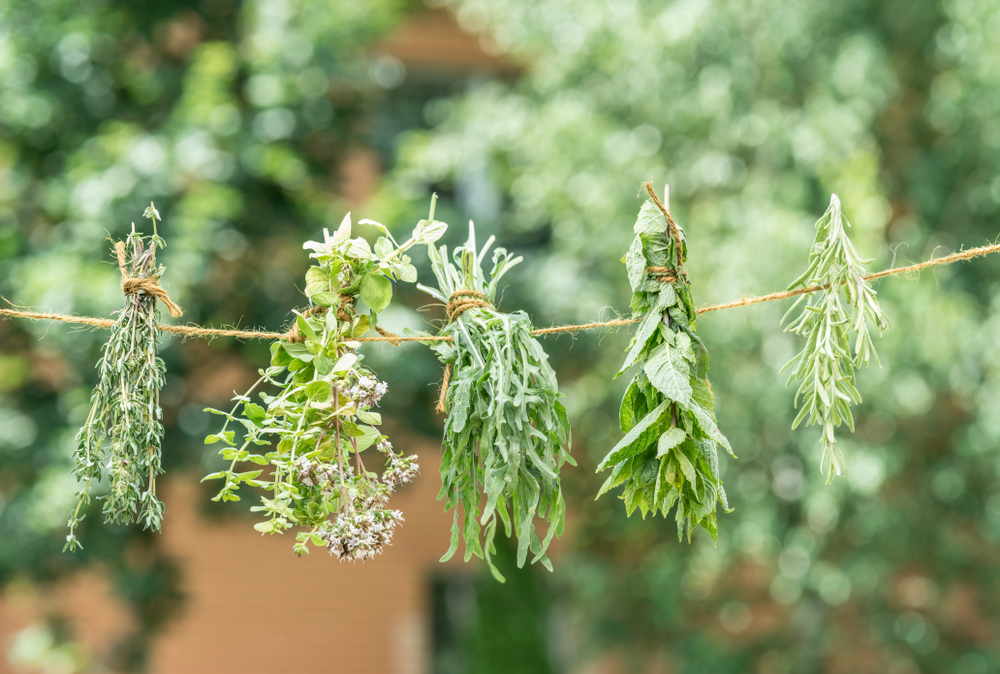
Photo by Valentyn Volkov, Shutterstock.
Dried Herbs
This might seem like the most simple and practical option. For those who want to start with something basic, test this method out.
You’re going to want to use herbs that haven’t flowered yet. If you choose to wash them, use a salad spinner or pat them dry with a paper towel.
Tie your herb stems in bunches with some string and hang them upside down in a warm, dry place. As the days pass and your herbs start to shrink in volume, you’ll likely need to tie the string tighter or use a twist tie to tighten the grip of the string. It takes on average about four to five days for the herbs to completely dry out. You can then shake out the herbs into a bag and separate the leaves from the stems.
After drying, store them in jars in a cool, dark place. Dried herbs keep for about six months before their flavor starts to lose its intensity.
Why isn’t the anaerobic environment of oil a perfect breeding ground for botulism? I know somehow it’s possible to do this in a commercial environment. But doing it at home?